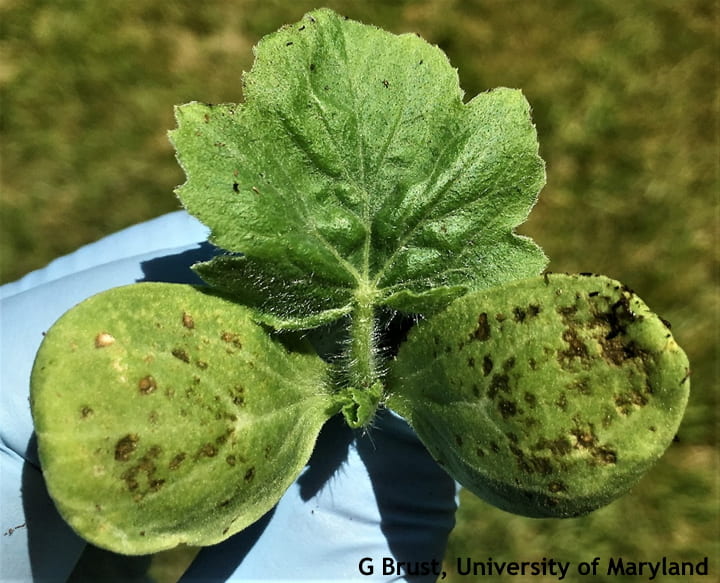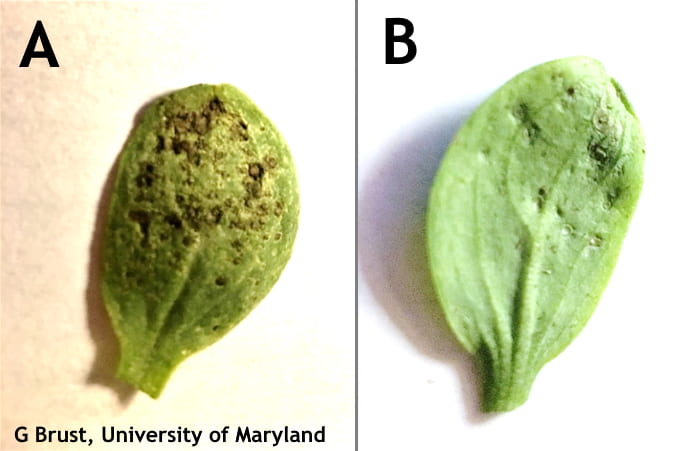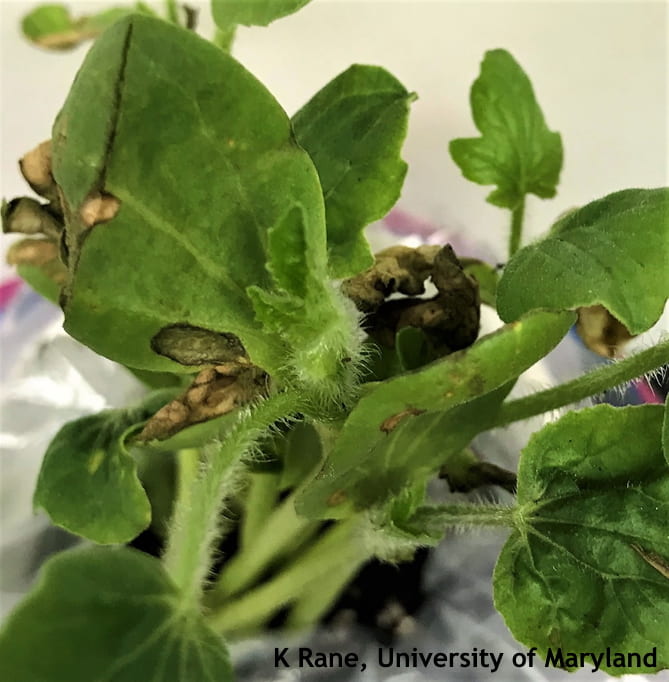Jerry Brust, IPM Vegetable Specialist, University of Maryland; jbrust@umd.edu
There have been several reports of odd-looking damage to watermelon transplants being grown in greenhouses these past couple of weeks. The damage does not appear to be cold damage per se, but more of a strange environmental/weather one. Watermelon transplants, along with some other vegetables, began showing dark pitted lesions on their cotyledons (Fig. 1). The marks looked bad and alarmed several growers as to what was going on. There were some indications that the damage was abiotic, (i.e., it was not caused by a disease or insect pest or any living organism). The first was that only the cotyledon leaves were damaged, all true leaves were clean. The cotyledon leaves tend to be more sensitive to any possible phytotoxic sprays that may be applied. The second was that the damage to the cotyledons was only one-sided. The top side of the leaf had the dark spots, but the underside of the same leaf just had some pitting caused by the damage on the top side of the leaf (Fig. 2). The third indication was that tomato seedlings in the greenhouse also developed similar necrotic spotting as the watermelon around the same time. Most of growers had all applied a spray treatment recently that they had applied for many years without any problems, but the environmental conditions at the time of this recent application resulted in a phytotoxic response from the plants. Although we had these 3 indicators that it was very unlikely to be a bacterial disease we still went ahead and had them tested by Karen Rane, Director of the UMD Diagnostic clinic. No disease was found.
Figure 1. Watermelon cotyledon leaves with brown lesions
Figure 2. Top-side of cotyledon leaf with brown lesions (A), and underside of same leaf (B).
Finally, there have been other samples and reports from GH growers of: necrotic lesions on watermelon leaves that were not a disease or insect damage (Fig. 3), poor seed germination of tomatoes and peppers and odd and poor growth of tomato, pepper and some cucurbit transplants. There unfortunately have not been any definitive answers found as to what the causes are and what can be done about them, although I greatly suspect they are all associated with environmental factors. These occurrences over the last couple of weeks demonstrate how weather can affect our crops even in greenhouses in ways that are unexpected and hard to figure out at times.
Figure 3. Necrotic (not-disease) spots on watermelon transplants



